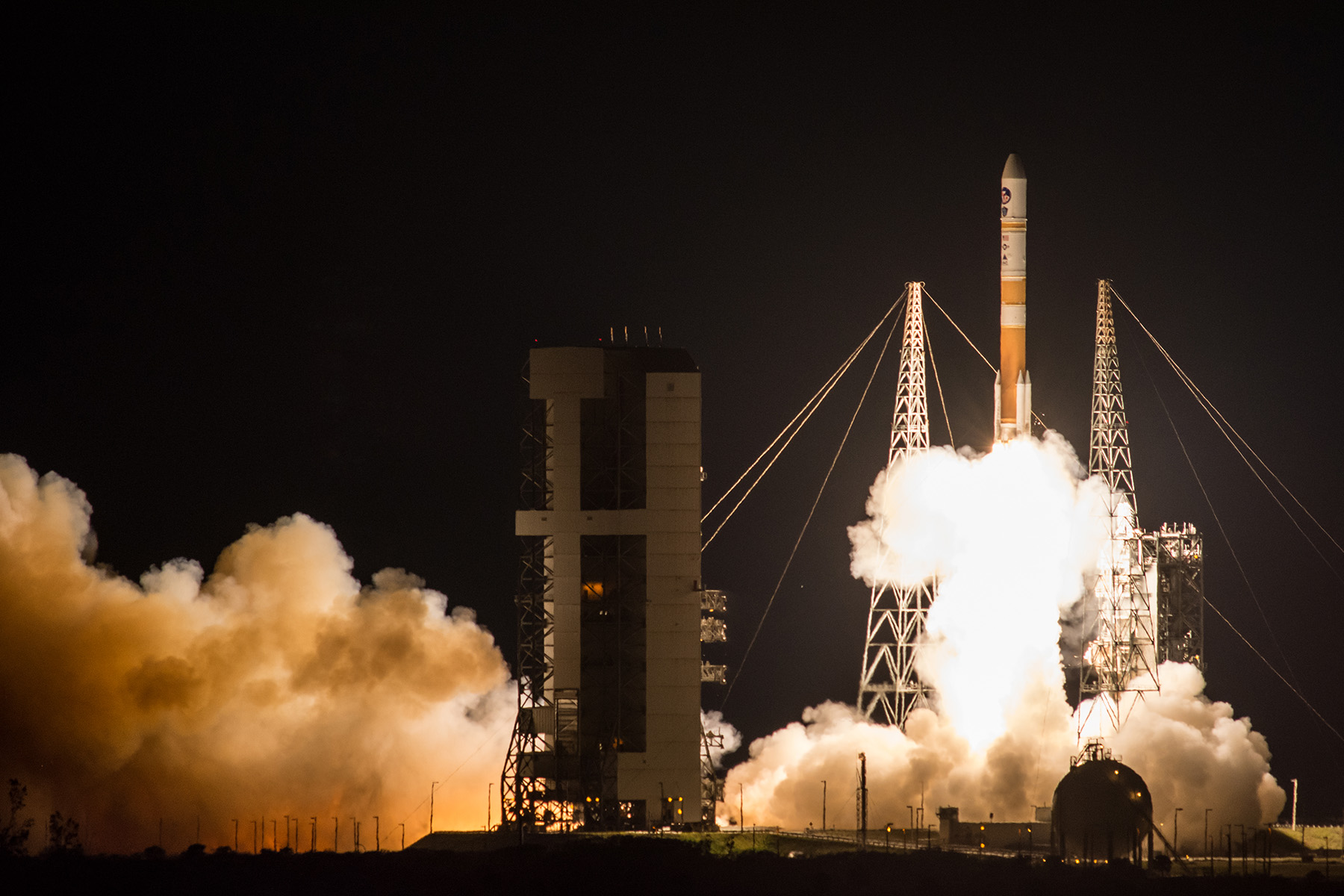
Air Force Space Command boss Gen. Jay Raymond said he wants to see more partnerships, such as the launch of WGS-9 above, which was launched through a five-nation partnership, in space. ULA courtesy photo.
Partnerships with allies, industry, other US military services, and the intelligence community are working to make “our space capabilities and our space warfighters … the envy of the world,” Gen. Jay Raymond, commander of Air Force Space Command, said Dec. 8 at an AFA Mitchell Institute event in Washington, D.C.
Raymond said the March 2017 launch of the ninth Wideband Global Satellite system, or WGS-9, procured through a five-nation partnership, represented a new level of international cooperation for AFSPC. In 2018, Raymond said he is ready to transition the Multinational Space Collaboration at Vandenberg AFB, Calif., into “a combined space operations center” with allied partners. Also, Japan has recently accepted an invitation to the 2018 Schriever space war game for the first time, Raymond said, though he noted he’d like to see even more international collaboration.
“I’d like allies to bring a full range of capabilities” to the joint space mission, Raymond said, and “I want to share everything we have” with those allies as well.
The Space Command boss also praised his relationships with commercial partners like SpaceX, which pioneered an autonomous termination system in a March 2017 launch from Cape Canaveral AFS, Fla. Raymond said he wants SpaceX and others to expand the use of autonomy in Air Force launches.
“My goal is that in the next five years or so our entire range will be autonomous,” he said.
Air Force space operators continue to train with cross-service partners, Raymond said. The most recent Space Flag exercise was a success, and he expects AFSPC to continue to host “two of these exercises every year.” Raymond also said he presented “an integrated tabletop exercise” at Schriever AFB, Colo., during Corona this year, where he told Air Force generals that his goal is to develop “joint-smart space leaders” and “space-smart joint leaders.”
The most promising partnership for the service, however, may be AFSPC’s growing relationship with the National Reconnaissance Office, which is also providing an avenue to speed up acquisition of some space assets.
“There’s no stronger partnership than ours with the NRO,” Raymond told the audience.
He offered the example of the Space-Based Space Surveillance follow-on program. Because he recognized the NRO was developing a capability with similar requirements, Raymond “terminated the SBSS follow-on” and worked together with NRO to develop a “program that fit both requirements,” speeding the process and saving money along the way.
